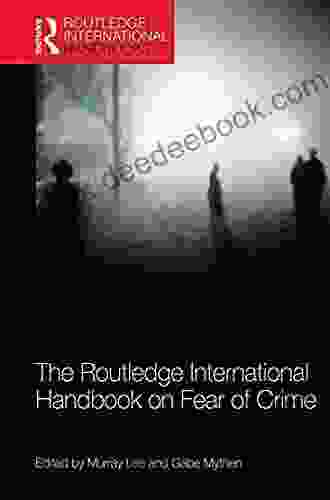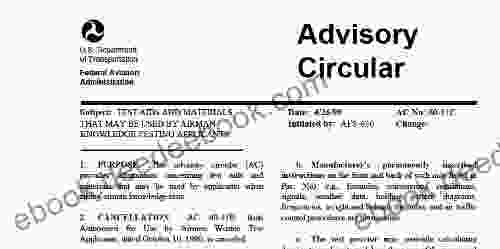Unveiling the Fascinating World of Tracking Dog Theory and Methods: A Comprehensive Exploration

![]()
Tracking dogs possess an extraordinary ability to follow scents and locate missing persons or evidence, making them invaluable assets in various fields. Understanding the theory and methods behind tracking dog training is crucial for harnessing their remarkable capabilities effectively. This article delves into the fascinating world of tracking dog theory, exploring the scientific principles, training techniques, and practical applications that underpin this remarkable canine skill.
4.3 out of 5
| Language | : | English |
| File size | : | 25339 KB |
| Text-to-Speech | : | Enabled |
| Screen Reader | : | Supported |
| Enhanced typesetting | : | Enabled |
| Print length | : | 214 pages |
| Lending | : | Enabled |
The Science of Tracking
Tracking dogs rely on their keen sense of smell to detect and follow scents, but the process involves far more than simply sniffing the ground. When a person or animal walks across a surface, they leave behind a trail of microscopic scent cells known as "scent particles." These particles are carried by air currents and can linger for days or even weeks, creating a scent trail that a trained tracking dog can follow.
Dogs possess an olfactory bulb, a specialized brain structure responsible for processing scents, that is many times more powerful than humans. They can detect and differentiate between trillions of scents, allowing them to track a specific individual by following their unique scent trail.
Tracking Methods
There are two primary types of tracking methods employed by dogs:
- Trailing: This method involves following the scent of a specific individual, typically a missing person or a fugitive.
- Area Search: This method is used to search a wider area for a missing person or evidence. The dog is allowed to wander off-leash and cover a large area, following any scent trails it encounters.
Each method requires specialized training and techniques to ensure the dog can effectively follow scents and locate the target.
Training Techniques
Training a tracking dog is a complex and time-consuming process that typically spans several months to years. The training involves:
- Scent Imprinting: The dog is exposed to the scent of the target individual and learns to associate that scent with a reward.
- Laying Tracks: The handler simulates a missing person or fugitive by walking through an area and leaving behind a scent trail.
- Tracking Practice: The dog is guided along the scent trail, learning to follow it even when faced with distractions or environmental challenges.
- Precision Tracking: Once the dog has mastered basic tracking, they are taught to follow the scent trail precisely and locate the target.
Practical Applications
Tracking dogs are widely utilized in various fields, including:
- Law Enforcement: Tracking dogs assist police and other law enforcement agencies in tracking down suspects, locating missing persons, and recovering evidence.
- Search and Rescue: Tracking dogs are deployed to locate hikers, climbers, and other individuals lost or injured in wilderness areas.
- Cadaver Detection: Specially trained tracking dogs can detect the scent of human remains, aiding in forensic investigations and disaster response.
- Explosive Detection: Some tracking dogs are trained to detect the scent of explosives, helping to enhance security measures.
Challenges and Limitations
Despite their remarkable abilities, tracking dogs face certain challenges and limitations:
- Environmental Conditions: Wind, rain, and vegetation can affect the scent trail, making tracking more difficult.
- Time Elapsed: As time passes, the scent trail becomes weaker, reducing the dog's ability to locate the target.
- Cross-Contamination: The presence of multiple scent trails in an area can confuse the dog and lead to false trails.
Tracking dogs are highly skilled and valuable partners in a wide range of fields. Understanding the theory and methods behind tracking dog training is essential for maximizing their effectiveness. Through specialized training and meticulous handling, these dogs can harness their extraordinary olfactory capabilities to follow scents and locate missing persons, suspects, or evidence. While challenges exist, the unwavering determination and keen sense of smell of tracking dogs make them an invaluable asset in ensuring safety, aiding in investigations, and rescuing those in need.
4.3 out of 5
| Language | : | English |
| File size | : | 25339 KB |
| Text-to-Speech | : | Enabled |
| Screen Reader | : | Supported |
| Enhanced typesetting | : | Enabled |
| Print length | : | 214 pages |
| Lending | : | Enabled |
Do you want to contribute by writing guest posts on this blog?
Please contact us and send us a resume of previous articles that you have written.
 Book
Book Text
Text Story
Story Genre
Genre Reader
Reader Library
Library Paperback
Paperback E-book
E-book Magazine
Magazine Paragraph
Paragraph Bookmark
Bookmark Shelf
Shelf Foreword
Foreword Footnote
Footnote Scroll
Scroll Tome
Tome Narrative
Narrative Biography
Biography Memoir
Memoir Reference
Reference Encyclopedia
Encyclopedia Dictionary
Dictionary Thesaurus
Thesaurus Character
Character Resolution
Resolution Borrowing
Borrowing Stacks
Stacks Study
Study Research
Research Scholarly
Scholarly Lending
Lending Reserve
Reserve Academic
Academic Journals
Journals Reading Room
Reading Room Special Collections
Special Collections Literacy
Literacy Storytelling
Storytelling Reading List
Reading List Theory
Theory Vicente Huidobro
Vicente Huidobro Hope Mirrlees
Hope Mirrlees Kevin Dennehy
Kevin Dennehy Tammie Rogers
Tammie Rogers Carolyn Jefferson Jenkins
Carolyn Jefferson Jenkins Myka Ramos
Myka Ramos Gordon Smith
Gordon Smith Rosa Luxemburg
Rosa Luxemburg Jorge Durand
Jorge Durand Coconut Papers
Coconut Papers Richard C Kirkland
Richard C Kirkland Venerable Master Hsuan Hua
Venerable Master Hsuan Hua Robert Pinsky
Robert Pinsky Maryann Jordan
Maryann Jordan Leslie North
Leslie North Luke Mathius Harlow
Luke Mathius Harlow Joe Berlinger
Joe Berlinger V Castro
V Castro Samuel Holloway Iii
Samuel Holloway Iii John Ostrosky
John Ostrosky
Light bulbAdvertise smarter! Our strategic ad space ensures maximum exposure. Reserve your spot today!

 Matthew WardImmerse Yourself in the Enchanting World of Showtime Piano Jazz Blues Level...
Matthew WardImmerse Yourself in the Enchanting World of Showtime Piano Jazz Blues Level...
 Christopher WoodsThe Adventures of Stuttering Superhero Adventure Interrupt Itis: Unraveling...
Christopher WoodsThe Adventures of Stuttering Superhero Adventure Interrupt Itis: Unraveling... Braden WardFollow ·18.5k
Braden WardFollow ·18.5k Christian BarnesFollow ·12.2k
Christian BarnesFollow ·12.2k Deion SimmonsFollow ·18.2k
Deion SimmonsFollow ·18.2k Walter SimmonsFollow ·14.1k
Walter SimmonsFollow ·14.1k Anthony WellsFollow ·10.6k
Anthony WellsFollow ·10.6k Evan HayesFollow ·12.7k
Evan HayesFollow ·12.7k Dave SimmonsFollow ·19.2k
Dave SimmonsFollow ·19.2k Colin RichardsonFollow ·11.1k
Colin RichardsonFollow ·11.1k

 E.E. Cummings
E.E. CummingsThe Routledge International Handbook on Fear of Crime
Fear of crime is a serious problem that can...

 Fletcher Mitchell
Fletcher MitchellThe Hunchback in Hellenistic and Roman Art: A...
The hunchback, or kyphosis, is a physical...

 Victor Turner
Victor TurnerA Comprehensive Guide to Needle Felting for Moms:...
Needle felting, a captivating craft...

 Joseph Foster
Joseph FosterWhere is Scandinavia?
Scandinavia is a region in...

 Leon Foster
Leon FosterNovel Shades of Magic: A Masterpiece of Magical...
An Enthralling...
4.3 out of 5
| Language | : | English |
| File size | : | 25339 KB |
| Text-to-Speech | : | Enabled |
| Screen Reader | : | Supported |
| Enhanced typesetting | : | Enabled |
| Print length | : | 214 pages |
| Lending | : | Enabled |









